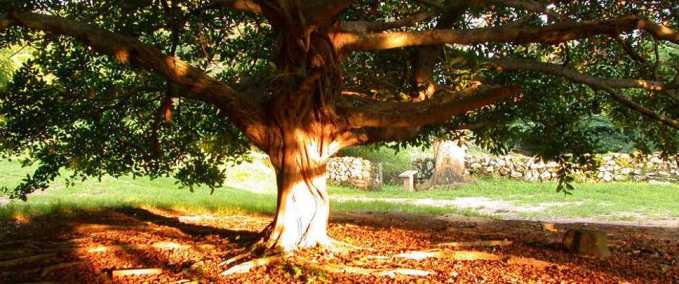Santa Rosa National Park, established in 1971, is considered as one of the largest and oldest national parks in Costa Rica. It is located 35 km north from Liberia and it has an internal 7 km-long, paved road leading to the Casona de Santa Rosa Museum. This park is a part of the Gunacaste Conservation Area. This 91,926-acre park protects Central America’s largest remaining section of tropical dry forest and it is a home to several turtle species, including the nesting Olive Ridley.
History:
Not only the natural beauty, but also there is a great historical significance stands behind the popularity of the Santa Rosa National Park. In this park the most important battle took place which was against the North American filibusterers led by William Walker coming from Nicaragua.
Climate:
 Dry season is the best time to visit Santa Rosa National Park as the roads are easily navigable and vegetation is sparse, making for easy observation of fauna. Dry season usually stays from mid December through April. In dry season trees lose their leaves, and many of Santa Rosa’s streams and small lakes dry up. You will be able to enjoy excellent wildlife as animals gather around remaining water sources. If you visit the park in rainy season you will find it greener which allows the animals to hide in the dense vegetation so you need to take your binoculars for watching those wild animals.
Dry season is the best time to visit Santa Rosa National Park as the roads are easily navigable and vegetation is sparse, making for easy observation of fauna. Dry season usually stays from mid December through April. In dry season trees lose their leaves, and many of Santa Rosa’s streams and small lakes dry up. You will be able to enjoy excellent wildlife as animals gather around remaining water sources. If you visit the park in rainy season you will find it greener which allows the animals to hide in the dense vegetation so you need to take your binoculars for watching those wild animals.
Attractions:
 In Santa Rosa Park you will get the opportunity to discover about 115 mammal species such as howler monkey, white-tailed deer, white faced monkey and coatis. There are also about 250 species of birds including elegant trogons, magpie jays, rufous-naped wrens, orange-fronted parakeets, crested caracaras, common black hawks and long-tailed manakins, great curassows, and among those magpie predominates. 50-60 bat species make their home here, and during dry season nights, brave visitors are able to explore their caves. You can also enjoy the beautiful beaches- Santa Elena Bay, Naranjo, Playa Blanca, and El Hachal Bay, located in the Murciélago sector and Nancite.
In Santa Rosa Park you will get the opportunity to discover about 115 mammal species such as howler monkey, white-tailed deer, white faced monkey and coatis. There are also about 250 species of birds including elegant trogons, magpie jays, rufous-naped wrens, orange-fronted parakeets, crested caracaras, common black hawks and long-tailed manakins, great curassows, and among those magpie predominates. 50-60 bat species make their home here, and during dry season nights, brave visitors are able to explore their caves. You can also enjoy the beautiful beaches- Santa Elena Bay, Naranjo, Playa Blanca, and El Hachal Bay, located in the Murciélago sector and Nancite.
 This park is home to over 750 species of plants, including 240 species of shrubs and trees such as live oak, shoemaker, gumbo-limbo and Guanacaste, Costa Rica’s national tree. You will find most common evergreen trees are the locust, chicle, oak, Tempisque and bitter-wood.
This park is home to over 750 species of plants, including 240 species of shrubs and trees such as live oak, shoemaker, gumbo-limbo and Guanacaste, Costa Rica’s national tree. You will find most common evergreen trees are the locust, chicle, oak, Tempisque and bitter-wood.
How to reach the park:
Santa Rosa National Park has its main entrance in 22 miles north of Liberia. You can follow the signs from the Interamerican Highway to access this park. While entering you will have to pay the entrance fee and take a map and then go more 3.5 miles to reach the administration center where you can learn about the road and weather conditions. There you can also get permission if you want to enjoy camping or turtle watching. You will have some facilities including Potable water, look-out, camping area, restrooms, general information, trails, biological station, meals service, conference rooms and lodging for researchers.


Comments are closed.